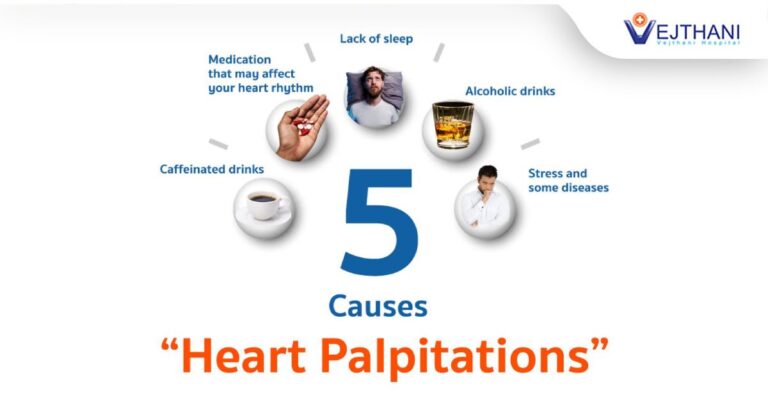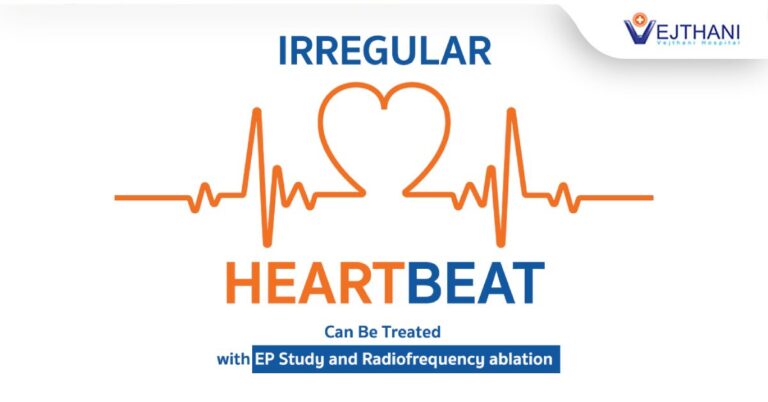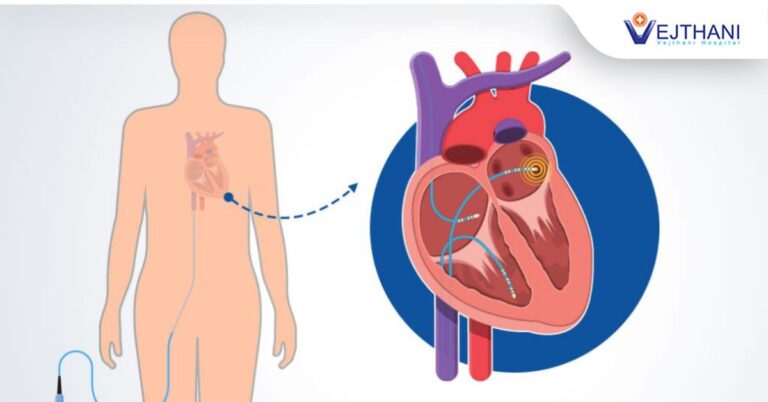

Atrial fibrillation is the most common type of heart arrhythmia. More than 50% of affected patients often experience no abnormal symptoms. This can lead to delayed treatment and increase the risk of death by 1.5 to 3.5 times compared.
Asst. Prof. Dr. Sarawuth Limprasert, a cardiac electrophysiologist at Vejthani Hospital, explains that atrial fibrillation is caused by abnormal electrical signals in the upper chambers of the heart (atria), which are responsible for receiving blood and pumping it to the ventricles. As a result, the heart beats irregularly and often faster than usual.
While more than half of the patients have no symptoms, others may experience palpitations, tiredness, dizziness, chest pain, and anxiety from atrial fibrillation. These symptoms can range from mild to severe, potentially disrupting daily tasks.
Common Risk Factors for Atrial Fibrillation are:
- Aging is considered the most common risk factor
- High blood pressure
- Overweight or obesity
- Diabetes
- Heart failure
- Coronary artery disease
- Hyperthyroidism
- Snoring
- Chronic kidney disease
- Consuming alcoholic drinks
- Smoking
Screening tests are crucial for early detection, as patients can receive treatment at an early stage. In addition to regular checkups, wearable technologies like smartwatches or fitness trackers can detect atrial fibrillation at an initial stage. However, it’s essential to consult a doctor for confirmed diagnosis and to receive appropriate treatment.
The doctor will diagnose atrial fibrillation based on the patient’s symptoms, medical history, physical examination, pulse and heart rate, and other laboratory tests to check for underlying conditions. This involves checking for anemia, kidney function, and thyroid function. Additionally, other screening tests like electrocardiograms (ECG) or Holter Monitor to record the heart rhythm for 24 hours could be done.
Guidelines for treating patients with atrial fibrillation include:
- Managing other chronic diseases
- Eliminating various risk factors.
- Reducing the chance of developing paresis and paralysis with blood thinners
- Reducing or preventing the symptoms of the disease by controlling heart rate and heart rhythm to normal levels.
Atrial fibrillation is currently treated with radiofrequency catheter ablation. This minimally invasive procedure involves inserting a special type of catheter into the affected area and using radiofrequency energy as high as radio waves to target and destroy the abnormal tissue that is causing an irregular heartbeat. The patient will be under general anesthesia, ensuring minimal pain during the procedure. Radiofrequency catheter ablation not only reduces the symptoms of Atrial fibrillation and increases the quality of life but also helps slow down the progression of the disease. This can further help lower the chance of various complications that may arise from Atrial fibrillation.
Preparation Before Undergoing Radiofrequency Catheter Ablation
Before undergoing radiofrequency catheter ablation, the intake of medications for heart arrhythmia should be stopped at least three days ahead, though the exact timeframe may vary depending on the doctor’s instructions. It’s important to bring a list of all the medicines the patient is taking on the day of the procedure. Additionally, patients will be instructed to refrain from food and drinks for at least 6 hours before the procedure. The nurse will prepare the areas on both sides of the groin or right side of the neck where the catheter will be inserted. Intravenous fluids will be given through a vein, and in some cases, a urinary catheter may be used.
Post-procedure care for Radiofrequency Catheter Ablation
Following radiofrequency catheter ablation, patients typically need to spend at least one night in a recovery room for 24-hour close monitoring of the heart rhythm and vital signs. To minimize bleeding and blood clot formation, avoid bending the affected leg for 4-6 hours. Be sure to immediately inform the medical staff if you experience any concerning symptoms like chest tightness, panting, difficulty lying down, dizziness, fever or feverishness, or any signs of bleeding or a blood clot at the groin incision site.
“Atrial fibrillation is a serious condition, even if many patients don’t experience noticeable symptoms. It significantly increases the risk of complications, including a 1.5-3.5 times higher risk of death compared to healthy individuals. Additionally, atrial fibrillation can lead to a decline in quality of life for 60% of patients, while 30% may develop heart failure, 20% experience depression, and the risk of dementia increases by 1.4-1.6 times. Research also suggests a potential link between atrial fibrillation and paralysis, with up to 30% of paralysis cases potentially stemming from this disease. Moreover, atrial fibrillation patients face a 10-40% annual risk of hospitalization.” – Asst. Prof. Dr. Sarawuth.
For more information, please contact
Cardiac Center, 5th floor, Vejthani Hospital
Call: (+66)2-734-0000 Ext. 5300
English Hotline: (+66)85-223-8888
- Readers Rating
- Rated 5 stars
5 / 5 ( Reviewers) - Spectacular
- Your Rating
























